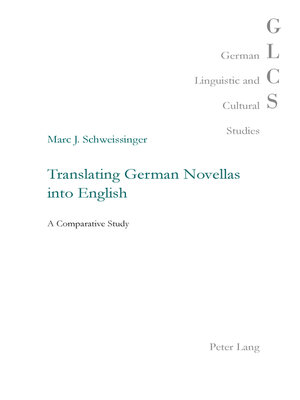Translating German Novellas into English
ebook ∣ A Comparative Study · German Linguistic and Cultural Studies
By Peter Rolf Lutzeier

Sign up to save your library
With an OverDrive account, you can save your favorite libraries for at-a-glance information about availability. Find out more about OverDrive accounts.
Find this title in Libby, the library reading app by OverDrive.



Search for a digital library with this title
Title found at these libraries:
| Library Name | Distance |
|---|---|
| Loading... |
Translation of fiction is always interpretation. This book discusses the challenges facing translators of fictional works from German into English using as examples English translations of canonical German novellas by Johann Wolfgang von Goethe, Theodor Storm, Gerhart Hauptmann, Thomas Mann and Franz Kafka.
The author addresses the difficulties of translating in the poststructuralist era, when every fictional work potentially has a large number of interpretations and, therefore, at least the same number of possible translations. Considering interpretations of the original text in detail not only improves the reader's understanding and ability to criticize the translated text, but it will also provide valuable insight into the possible intentions of the writer. An initial linguistic observation of a target text can therefore lead to a fruitful connection between the linguistic and literary analysis of translated works. This book offers new perspectives on the delicate negotiation of translating source texts for a contemporary audience while maintaining the values, ideas and hidden meanings from the source in relation to its original époque.
The author addresses the difficulties of translating in the poststructuralist era, when every fictional work potentially has a large number of interpretations and, therefore, at least the same number of possible translations. Considering interpretations of the original text in detail not only improves the reader's understanding and ability to criticize the translated text, but it will also provide valuable insight into the possible intentions of the writer. An initial linguistic observation of a target text can therefore lead to a fruitful connection between the linguistic and literary analysis of translated works. This book offers new perspectives on the delicate negotiation of translating source texts for a contemporary audience while maintaining the values, ideas and hidden meanings from the source in relation to its original époque.







